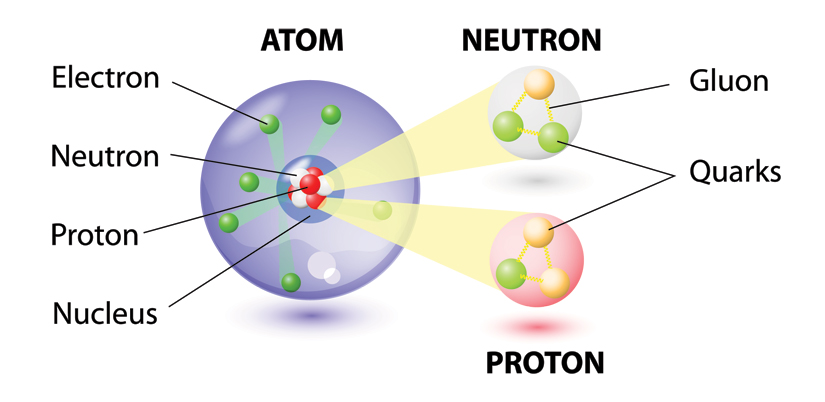
12th November 2021 First ever simulation of baryons on a quantum computer A team of researchers from the Institute for Quantum Computing (IQC) at the University of Waterloo, Canada, has performed the first-ever simulation of baryons – subatomic particles made up of three quarks – on a quantum computer. Their work is a step towards more complex simulations that could potentially reveal new insights into the very early Universe. The most well-known baryons are protons and neutrons, part of the hadron family of particles that also includes mesons, making up most of the mass of visible matter in our Universe and forming the nucleus of every atom. During the quark epoch (10−12 to 10−5 seconds after the Big Bang), a hot and dense quark–gluon plasma filled the Universe, with collisions between particles being too energetic to allow quarks to combine into baryons or mesons. As the Universe expanded, however, quarks grouped together in threes to form baryons, i.e. protons and neutrons. At some point, a process called baryogenesis is hypothesised to have taken place. This produced "baryonic asymmetry", an imbalance of matter (baryons) and antimatter (antibaryons) in the observed Universe. Since matter and antimatter are known to annihilate each other on contact, one of the biggest mysteries in physics is why matter dominated over antimatter during those earliest moments of the Universe. In addition to potentially shedding light on this, quantum computer simulations of baryons will improve scientists' understanding of neutron stars, which are the second densest objects in the Universe (after black holes) and consist almost entirely of neutrons.
"This is an important step forward – it is the first simulation of baryons on a quantum computer ever," said Christine Muschik, IQC faculty member. "Instead of smashing particles in an accelerator, a quantum computer may one day allow us to simulate these interactions that we use to study the origins of the Universe and so much more." Muschik, who is also a physics and astronomy professor at the University of Waterloo (UW), leads the Quantum Interactions Group, which studies the quantum simulation of lattice gauge theories. These theories are descriptions of the physics of reality, including the Standard Model of particle physics. The more inclusive a gauge theory is of fields, forces, particles, spatial dimensions, and other parameters, the more complex it is – and the more difficult it is for a classical supercomputer to model. Non-Abelian gauge theories are particularly interesting candidates for simulations, because they are responsible for the stability of matter as we know it. Classical computers can simulate the non-Abelian matter described in these theories, but there are important situations – such as matter with high densities – that are inaccessible for regular computers. And while the ability to describe and simulate non-Abelian matter is fundamental for being able to describe our Universe, none has ever been simulated on a quantum computer. Working with Randy Lewis from York University, Muschik's team at IQC developed a resource-efficient quantum algorithm that allowed them to simulate a system within a simple non-Abelian gauge theory on IBM's cloud quantum computer, paired with a classical computer. "What's exciting about these results for us is that the theory can be made so much more complicated," said Jinglei Zhang, a postdoctoral fellow at IQC and UW's Department of Physics and Astronomy. "We can consider simulating matter at higher densities, which is beyond the capability of classical computers." As quantum computers and quantum algorithms become more and more powerful, scientists will gain the ability to simulate the physics of these more complex non-Abelian gauge theories and study fascinating phenomena. A paper on this latest breakthrough appears in Nature Communications.
Comments »
If you enjoyed this article, please consider sharing it:
|







